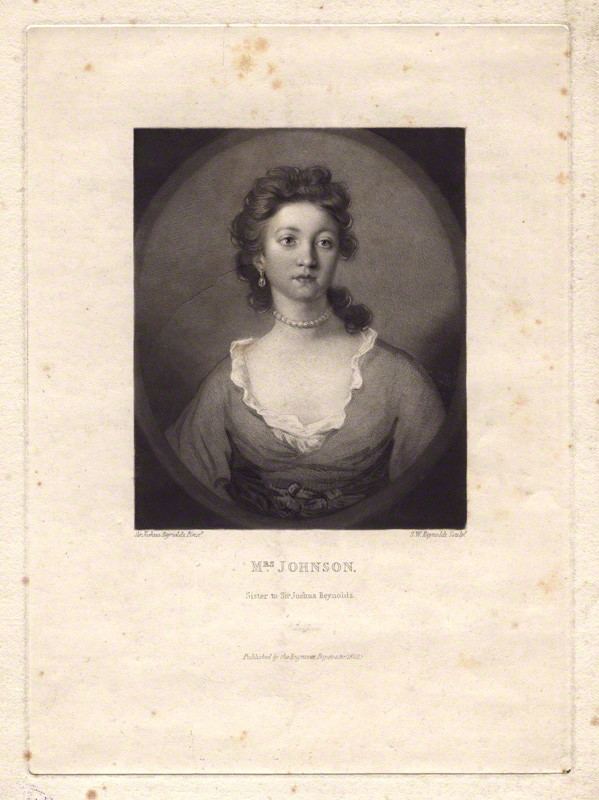Name Elizabeth Johnson | Role Pamphleteer | |
 | ||
Elizabeth johnson
Elizabeth Johnson née Reynolds (8 July 1721 – 14 May 1800) was an English pamphleteer who attempted to win one of the rewards offered by the Longitude Act passed in 1714. Johnson and Jane Squire are the only two women known to have done so. It was not considered an appropriate subject for early modern women especially given its financial, maritime, and government dimensions.
Contents
- Elizabeth johnson
- Siangbawinu elizabeth johnson biacah
- Early background
- Married life
- Publications
- Longitude
- References
Siangbawinu elizabeth johnson biacah
Early background
She was born to the Rev. Samuel Reynolds and his wife Theophilia in Plympton, Devon. Among her siblings was the acclaimed artist Sir Joshua Reynolds, who used her as a model for works which were widely copied in mezzotint. The two would later quarrel over Joshua's lack of piety and over her husband's precarious financial situation and eventual bankruptcy.
Their other siblings included the author Mary Palmer and painter Frances Reynolds.
Married life
On 7 January 1753, Elizabeth Reynolds married William Johnson at St. Michael and All Angels in Great Torrington, Devon.
The marriage produced seven children before her spouse abandoned the family, leaving Elizabeth at least in part dependent on her literary endeavors.
Publications
Johnson's religious pamphlets, beginning with The Explication of the Vision to Ezekiel in 1781, were written anonymously - likely to evade any criticism of women publishing or expressing religious ideas. One critic sarcastically commented on her earlier works in 1783: "As the intentions of this writer are pious, his facilities evidently disordered, and his lucubrations absolutely unintelligible, these three pamphlets must be exempted from criticism." William Johnson Cory later revealed the true identity of the pamphlets' author in a handwritten inscription on one of the Bodleian Library's copies of the Ezekiel pamphlet: "This strange book was written by my great-grandmother Mrs. Johnson, sister of Sir Joshua Reynolds. When extremely poor she posted up to Oxford to get it published, being a real enthusiast."
Longitude
The Astronomy and Geography of the Created World,[1] her fourth pamphlet published in 1785, included a short reference to longitude. The pamphlet ended with the claim "that if the palm for finding the longitude, is not given to the author of the Explanation of the Vision to Ezikiel it will never be given to another". The modern attribution of the Ezekiel pamphlet to Johnson has only recently revealed that the author of the 1785 work was a rare female longitude-seeker,[2] as she even remained anonymous when sending it to the Board of Longitude in 1786[3] in the hope of a reward. She was unsuccessful, and the pamphlet and letter were later catalogued by the Astronomer Royal George Airy in a volume of Board of Longitude correspondence which he entitled Irrational Astronomical Theories[4] in 1858. However, it was not the only early modern pamphlet to address both religion and longitude.
Elizabeth Johnson died in Great Torrington, Devon in 1800.
